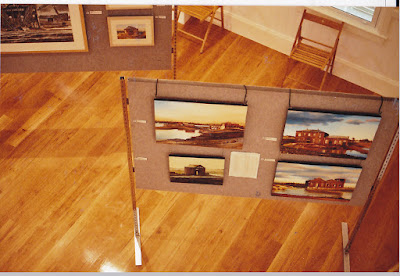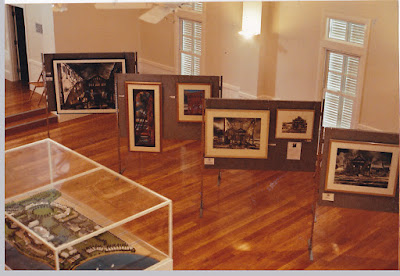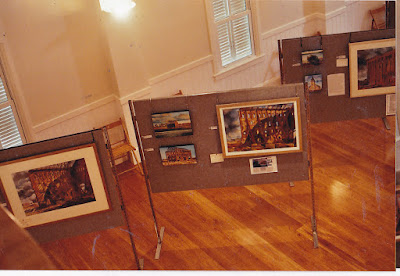 |
| DH143 Preparing for a boat lift 2007 oil on canvas 92 x 122cm Available for sale |
 |
| DH143 Preparing for a boat lift 2007 oil on canvas 92 x 122cm Available for sale |

 |
| DH143 Preparing for a boat lift 2007 oil on canvas 92 x 122cm Available for sale |
 |
| DH143 Preparing for a boat lift 2007 oil on canvas 92 x 122cm Available for sale |
About 50 years ago, the containerization
of shipping modified the wharves dramatically & transformed port cities beyond recognition.
The humble shipping container isn't just a metal box - it created the world as we know it today.
Once goods were loaded and transported around the world as "break bulk" cargo. Container standardization revolutionized global trade, making it easier, quicker and cheaper. However,with the advent of the container, some of the mystery & magic of the shipping industry was lost forever.
wake up
look around
memorise what you see
it may be gone tomorrow
everything changes. Someday
there will be nothing but what is remembered
there may be no-one to remember it.
Keep moving
wherever you stand is ground zero
a moving target is harder to hit
"Ground Zero" by Michael Dransfield
 |
| AGL38 'AGL Site, Mortlake' 2004 oil on canvas 75 x 100 cm Available for sale |
 | |
| Exhibition of AGL site Mortlake paintings in Breakfast Point Community Centre 2004 |


Exhibition of AGL site Mortlake paintings
in Breakfast Point Community Centre 2004
The former
AGL Gasworks site has now been completely redeveloped into the controversial new gated suburb of Breakfast Point by Rosecorp.
The complex of white and pale beige apartments and townhouses is totally
unrecognizable from its industrial past.

Exhibition of AGL site Mortlake paintings
in Breakfast Point Community Centre 2004
To coincide with the opening of their new suburb, Rosecorp and the CFMEU jointly invited me to hold a solo exhibition in their freshly built Community Hall.
My paintings consisted almost entirely of renditions of the C.W.G. Building, which had recently been demolished.
Irony totally intentional.
Related Posts
In 2003, the State Government announced that the stevedoring wharves at East Darling Harbour, on the western edge of Miller's Point, known since the Depression as the 'Hungry Mile', would be transformed into a new urban precinct, which would later be known as Barangaroo.
The wharf has now closed forever and Sydney’s traditional role as a working harbour is essentially over.
For Sydney Harbour no longer to be a working port and to be stripped of its original character and purpose, was almost unthinkable.
I resolved to paint its hidden history before it was too late. This concrete expanse was often derided as 'ugly', usually by people who had never set foot on it, but I found it a rich and fascinating source of inspiration for a series of several hundred paintings.
I became 'Artist in Residence' in 2003, and was still painting there after the last wharfie left in October 2007. I always painted 'en plein air', even though the completed works have the compositional poise of a Jeffrey Smart.
DH135A 'Maintaining the crane' Diptych
2007 oil on canvas 51 x 25.5cm each panel
Available for sale

